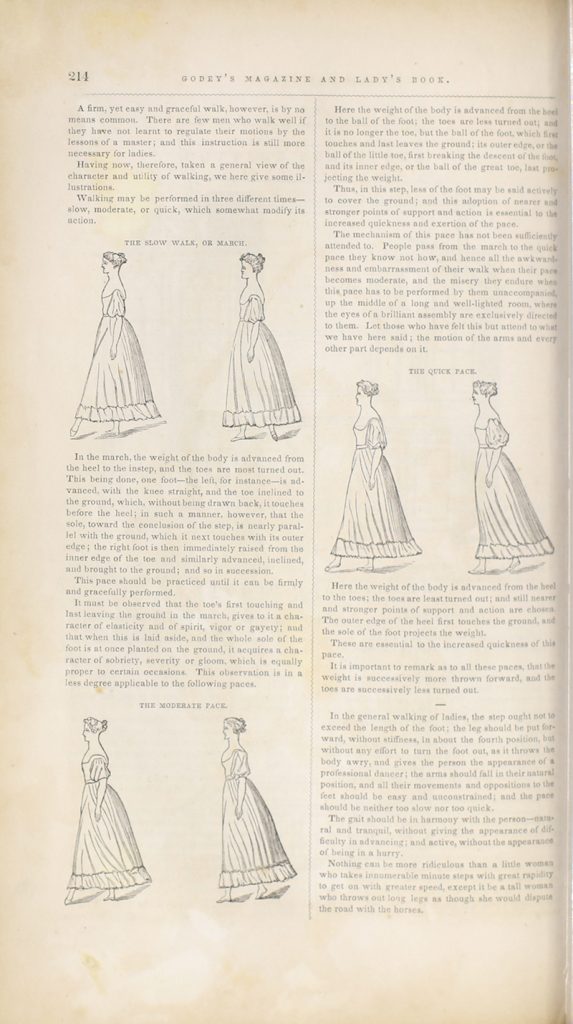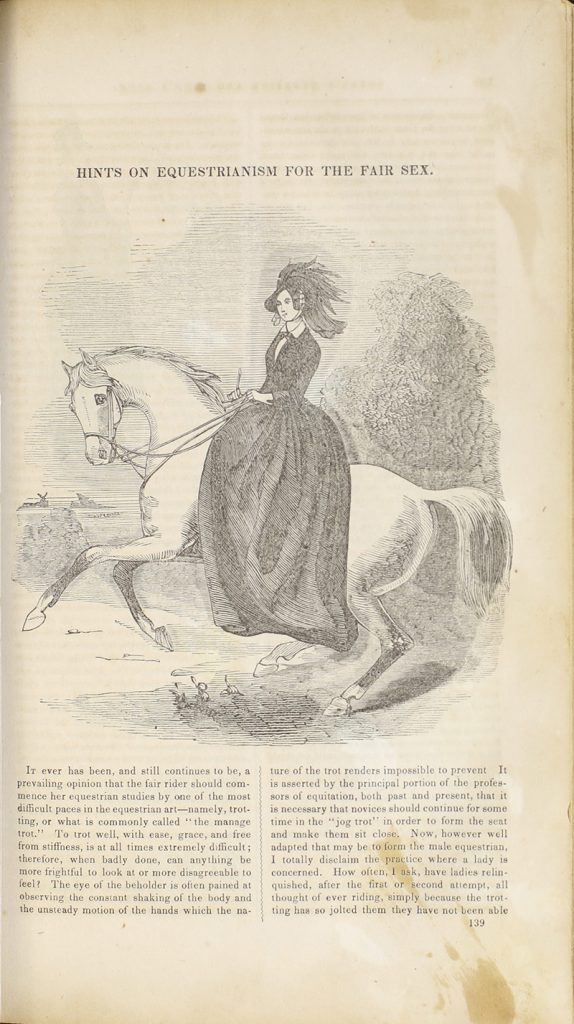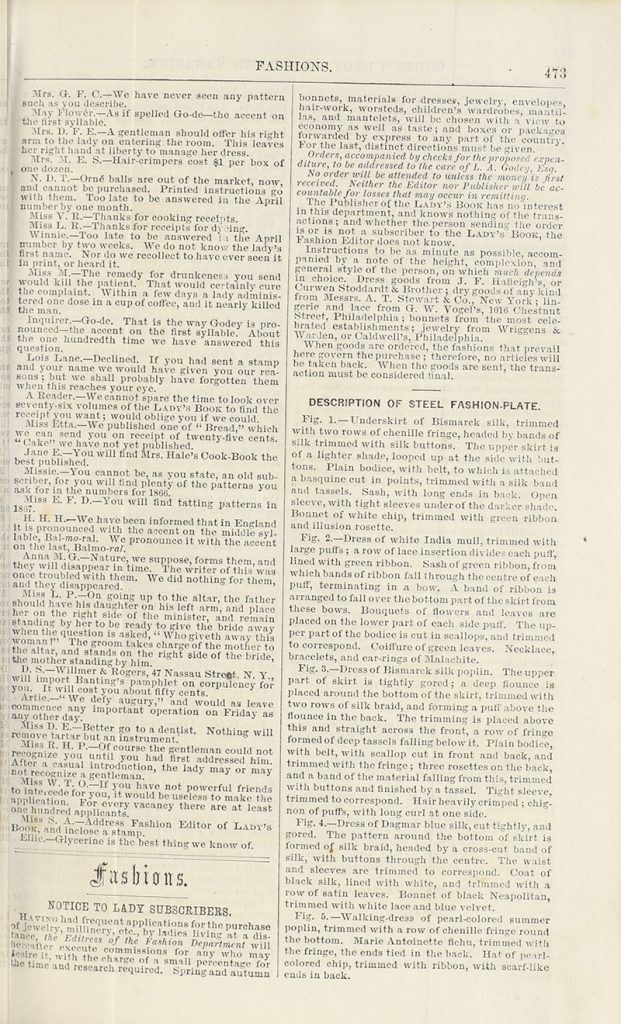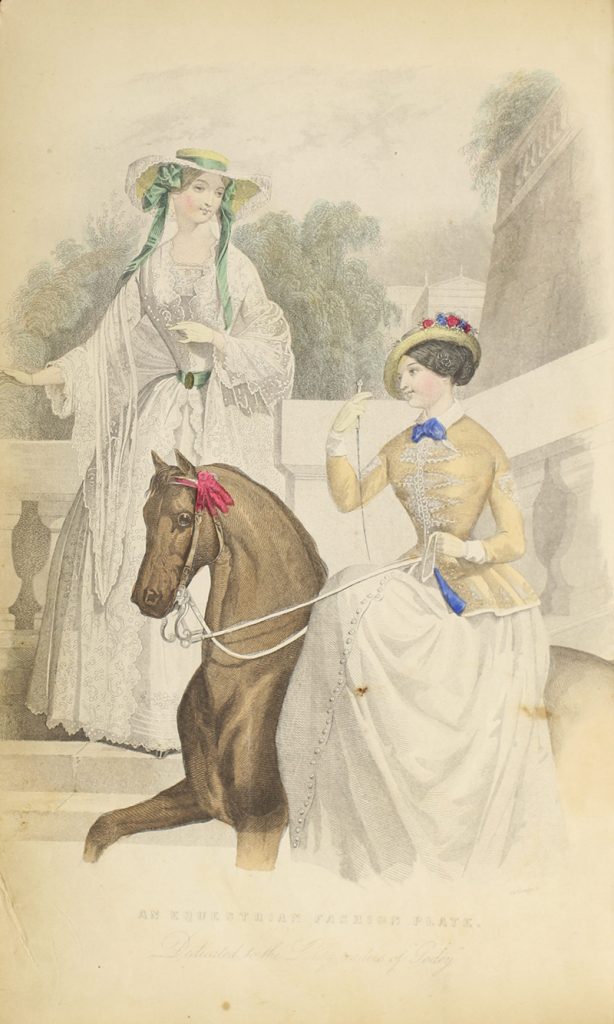Health and Beauty
Health and Beauty as Seen Through Godey’s Lady’s Book
Godey’s Lady Book’s content reflected the widespread conservative beliefs people had in regards to women’s roles in antebellum America. For example, an integral part of a woman’s identity was for her to be self-sufficient within the domestic sphere. Also, the publication’s contributors wrote articles relating to fashion’s influence on society after Sarah Josepha Hale, the editor of the Lady’s Book, permitted them to do so.
A woman’s identity was formed through societal expectations and personal welfare. The publication’s writers composed articles detailing how to maintain proper health, and how to present oneself elegantly while engaged with others. The growing interdependence of health and beauty reflected women’s efforts becoming progressive, as women sought a wider variety of ways to improve their overall wellbeing.
Health and Beauty: Indian Practice Edition

Sarah Josepha Hale (1788-1879)
Godey’s Lady’s Book, 1849
Monthly Periodical (1830-1878)
Philadelphia, Pennsylvania
Vanderbilt University Special Collections
A recurring message throughout Godey’s articles stated that healthy practices were necessary for a woman to maintain a charming image and to complete her daily tasks effectively. How a woman presented herself was vital in order to establish a good first impression amongst her peers. Godey’s Lady Book listed several articles showing exercises that were beneficial to their readers. Previously, only men participated in physical activities for fitness-related purposes. Now, women openly discussed and partook in exercises to improve their productivity. Women openly cared about their physical well-being, and exercise was no longer seen as a men’s only activity.
Indian clubs became popular during the 19th century British colonization of India. Women used the clubs as exercising equipment to improve the arm’s flexibility. The increased mobility in the arms allowed her to complete domestic tasks, as many of the women who read Godey’s remained in the house while their husbands worked elsewhere. Domesticity was an integral part of a woman’s identity due to societal expectations mandating for her to be the household’s foundation at all times.
Health and Beauty: Walking

Sarah Josepha Hale (1788-1879)
Godey’s Lady’s Book, 1849
Monthly Periodical (1830-1878)
Philadelphia, Pennsylvania
Vanderbilt University Special Collections
The article explaining the nuances of walking stated, “It is owing to these circumstances that walking displays so much of the character of the walker.” If a woman walked slowly and hunched over, then they are said to be weak, feeble, and nervous. Respectively, if she walked with diligent pacing and upright, then they are said to be poised and composed.
The walking advice was summarized with, “The gait should be in harmony with the person–natural and tranquil, without giving the difficult appearance of advancing.” A woman should take her own appearance into account while walking, as they should not let their arms flail out of control or take steps larger than the length of their foot. The walks should be practiced routinely until one is able to do it without much thought and effort.
Health and Beauty: The Equestrian Trot

Sarah Josepha Hale (1788-1879)
Godey’s Lady’s Book, 1849
Monthly Periodical (1830-1878)
Philadelphia, Pennsylvania
Vanderbilt University Special Collections
Horseback riding was a popular leisure activity for Godey’s readers. A woman had to take into consideration everything involved with the activity, from the clothes she wore while riding, to the feelings of the people alongside her. She should not want to leave a poor impression, because of the negative social implications that could have. Social customs dictated for women to only associate with like-minded individuals who show grace. It was greatly discouraged for women to be with unrefined people.
One of the most difficult equestrian skills to master was the trot. One author wrote, “To trot well, from ease, grace, and free from stiffness is at all times extremely difficult.” If the trot was not done properly, the woman will appear unruly on top of the horse, which is difficult to behold for those watching. Learning to ride a horse involved a lot of practice, but the payoff was gratifying.
Health and Beauty: Fashion Trends

Sarah Josepha Hale (1788-1879)
Godey’s Lady’s Book, 1849
Monthly Periodical (1830-1878)
Philadelphia, Pennsylvania
Vanderbilt University Special Collections
Fashion trends being discussed within Godey’s Lady Book departed from Hale’s personal belief of not seeing much value in fashion, which was the prevalent conservative belief at one point. Readers saw the trends as inspiration for what they should wear at social events. The trendiest clothes had ornate designs, expensive silks, and elaborate embroidery.
Being informed about fashion trends became important for Godey’s readers as a bandwagon effect developed. If a woman was not following the trend, then she should be left behind or shunned within her social circles. The women who kept up with fashion trends were the ones held in high regards, which boosted her self-esteem.
Health and Beauty: Fashion Prints

Sarah Josepha Hale (1788-1879)
Godey’s Lady’s Book, 1849
Monthly Periodical (1830-1878)
Philadelphia, Pennsylvania
Vanderbilt University Special Collections
Fashion’s importance grew as publications like Godey’s became more readily available. Social and economic capital were gained by taking interest in these prints. Fashion prints being popularized gave the opportunity for women to showcase their artistry to a wider audience, as the publication increased its number of fashion prints over time. Also, fashion prints made it easier for women to get a better visual and understanding of the latest trends. However, many of the readers did not follow the trends listed in Godey’s Lady Book meticulously, and instead discussed with peers how the fashion trends should be improved upon.
